You sit down at the piano to try and read piano notes. You stare at the mass of confusion on the paper with a confused look on your face.
You have no idea how you are going to start reading piano music.
The notes on the piano are not all that hard to learn. There is a bit of difficulty, but once you learn the basics it’s just a matter of time until you are able to learn piano notes.
On this page I am going to give you the inside scoop on how to read piano notes. A lot of people make reading piano notes a lot harder than it needs to be. I am going to break it down to the basics so that you will be reading piano notes in not time.
Now on with the show!
The Basics of How to Read Piano Notes
The first thing you need to know when reading piano music is clefs. There are two clefs on piano music, the top clef and the bottom clef.
The top clef is known as the treble clef and the bottom clef is known as the bass clef. The treble clef contains the higher pitched notes, while the bass clef holds the lower pitch notes.
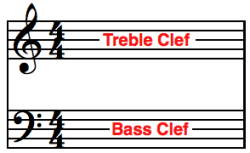
The notes in each clef sit on lines known as the staff. Each staff contains a series of horizontal lines that run the length of the sheet music. These lines are what tell the musician the note on the piano they are to play.
Between two lines is a space. These spaces also represent notes on the piano. The lines and spaces on the sheet music are what guide the musician on what to play.

Take a look at the images above and you will see the lines and spaces on the piano staff.
The lines and spaces are highlighted in blue.
Notes One The Page
The notes on piano sheet music are named with letters. This is called the “musical alphabet.” The musical alphabet is a little different than the standard alphabet that you and I know. It follows the same order but it stops on the letter G.
This means that there are only seven notes in the musical alphabet, notes A through G. No H, I J, or K.
The musical alphabet looks like this: A, B, C, D, E, F, G.
Once you get to G, you start back over at A. This is important to know when reading the grand staff, or both together.
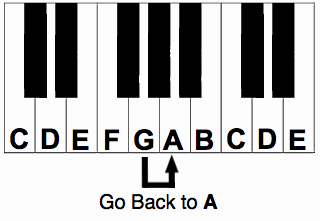
Treble Clef Notes
To read piano notes you have to learn the notes on both clefs. Take a look at the treble clef and let’s start reading piano music.
Lines
The lines of the treble clef start with E on the bottom line. As you move up the staff the notes read as follows: E, G, B, D, F.
Most private teachers will use a sentence to help students remember the notes on the lines of the treble clef. Use the sentence Every Good Boy Does Fine to help remember the notes on the lines of the treble clef.

Spaces
A space on the staff is the area between each line. The bottom space on the treble clef is F, the second space is A, third space is C, and the top space is E.
So the notes on the treble clef spaces are F, A, C, E. Think of the word FACE when referring to the notes on the spaces in the treble clef. This is an easy way to remember the notes on the spaces.

Bass Clef Notes
The bass clef notes are read like the notes on the treble clef. The staff is divided into lines and spaces like above. Let’s look at the notes on the bass clef and find an easy way to read piano notes on the bass clef.
Lines
The note on the bottom line of the bass clef is G. As you move up the lines on the bass clef they would read G, B, D, F, A.
An easy to remember sentence to go along with these notes would be Good Boys Do Fine Always. Use this sentence when reading piano music in the bass clef.
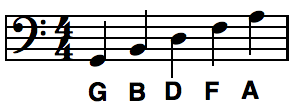
Spaces
The notes on the spaces of the bass clef are A, C, E, G. Use the sentence All Cows Eat Grass as a way to easily remember the spaces of the bass clef.

Grand Staff
Now that you know the notes on the both clefs, it’s important to know how to read notes on Grand Staff. Above we looked at each clef separately; now let’s combine both clefs to create the Grand Staff.
If you look at the notes on the grand staff you will notice that there is gap between the top line of the bass clef and the bottom line of the treble clef. The top note of the bass clef is A, and bottom note of the treble clef is E.
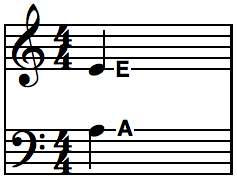
On the grand staff you are missing three notes in the musical alphabet. It skips from A to E omitting B, C, and D.
Where did these notes go?
The large area between the clefs is where these three notes belong. We use what’s called ledger lines to represent the notes in this area. Take a look at the image below and you will see how there is a short line representing C between the two clefs. This C is known as Middle C.
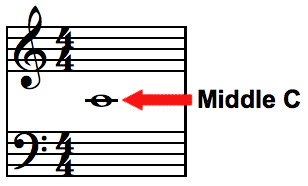
You can start at middle C and go through the musical alphabet either up or down counting lines and spaces to read the notes on the staff.
When we read piano notes you must learn the notes on both clefs, you should also know how to apply this to the grand staff. Reading piano music on the clefs can be easy, but applying it to the grand staff can be a little more difficult.
Remember the sentences that were used to help you with the lines and spaces on each clef. Also, practice reading the notes on the piano on the grand staff so you can read both the right hand notes and the left hand notes together.

